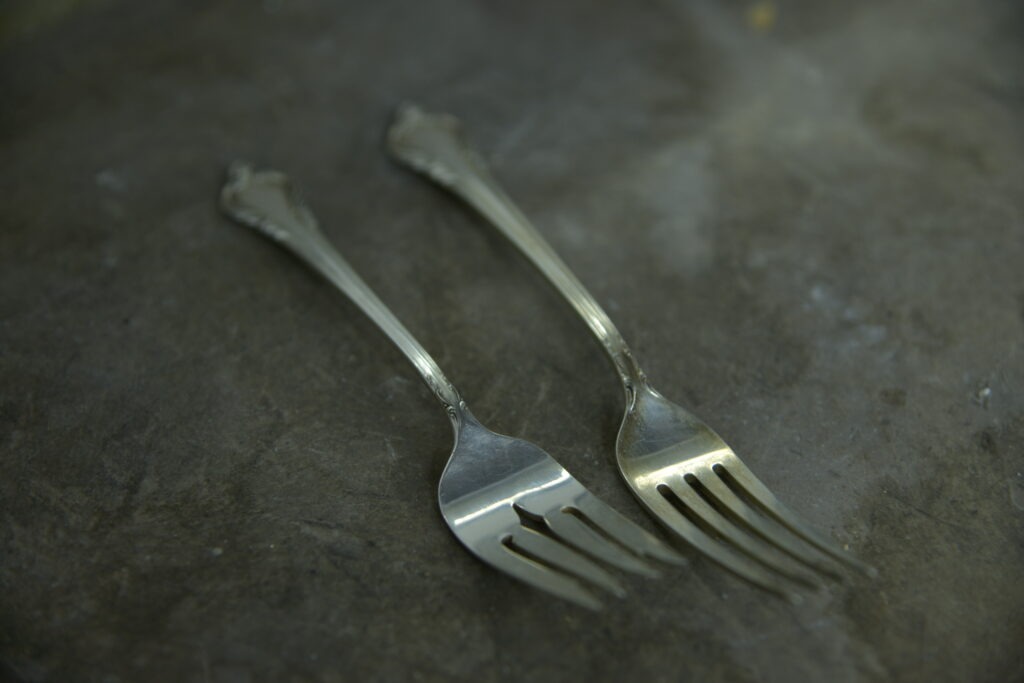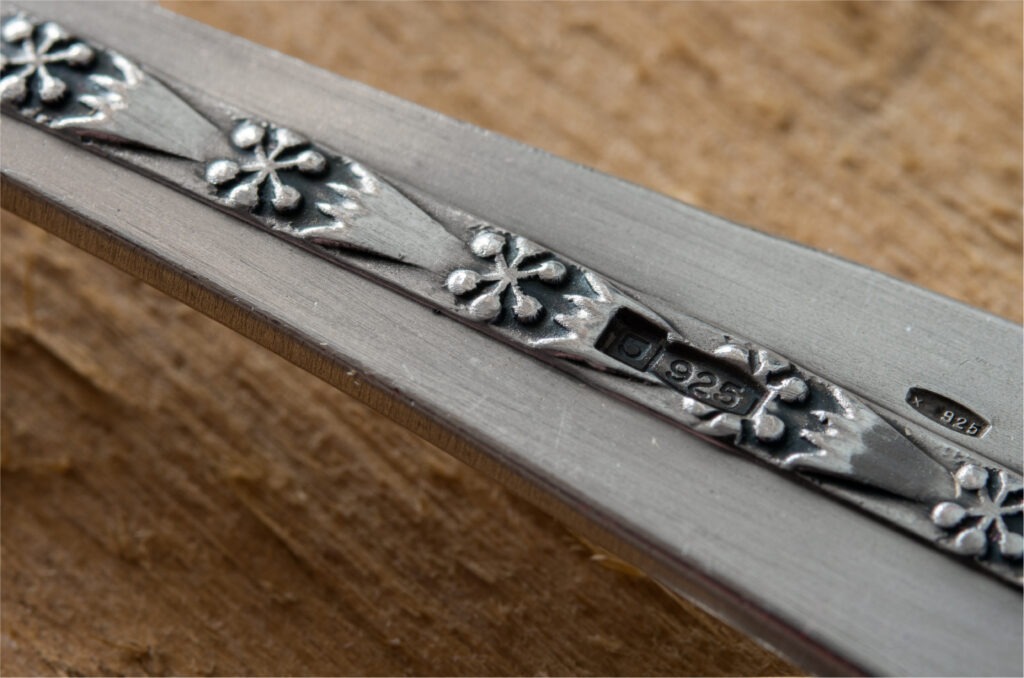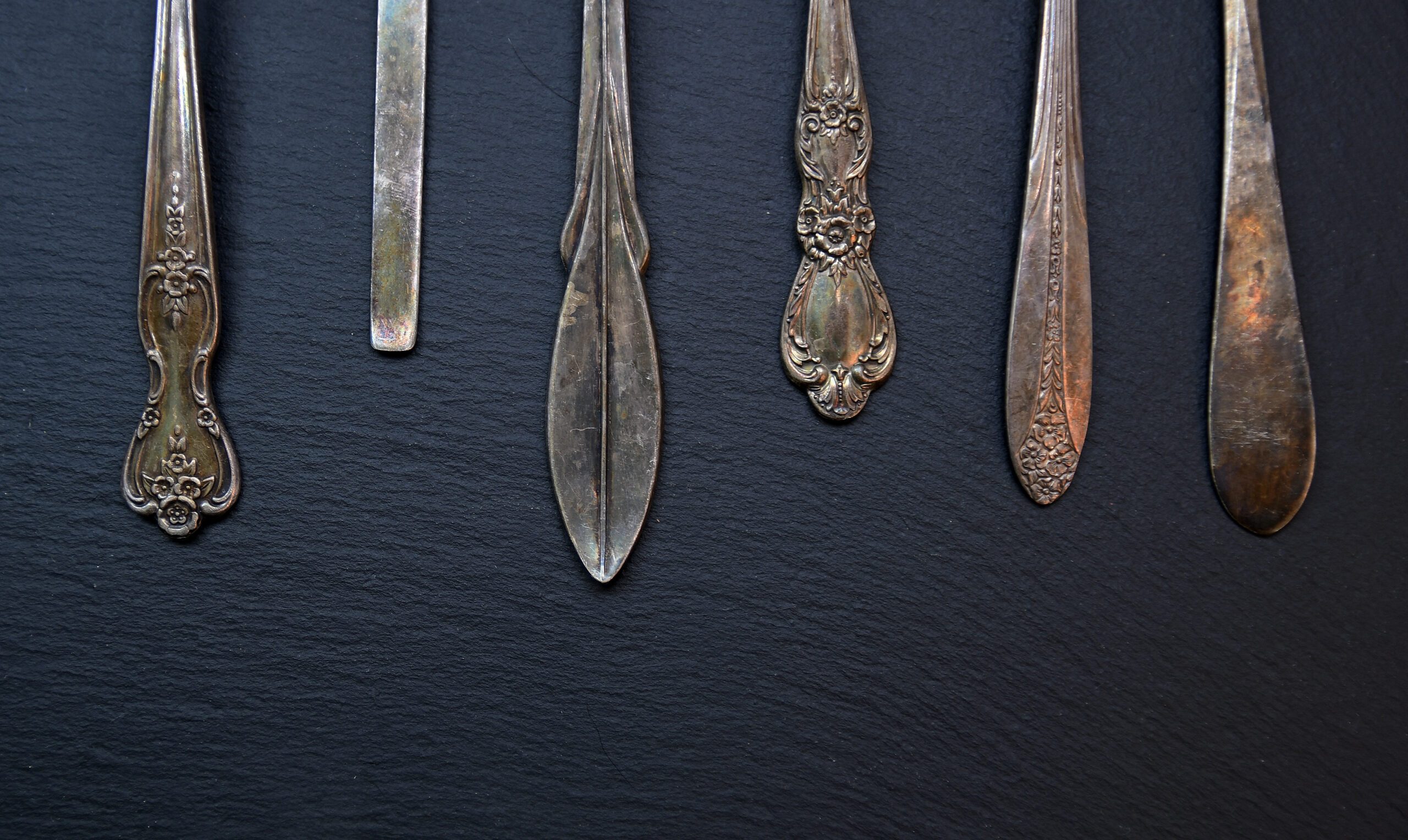Antique sterling silverware sets are a common family heirloom. Not only are they valuable, but they often have unique personalized details. If you’ve ever resurrected a vintage silver dining set from long-term storage, you may have noticed a slight brownish or black tint on the surface. Maybe you’ve even been tasked with polishing the silverware for a special meal or occasion.

Keeping your silver shining requires some time and effort, but it’s worth it to take care of your precious metal assets. In fact, it wasn’t uncommon for silver dealers in the late 19th and early 20th centuries to employ full-time polishers to keep their products in tip-top shape. Imagine polishing silver all day for a living!
Sterling Silver
Silver entities such as flatware, jewelry, teapots, candlesticks, vases and the like are almost never made of 100% pure silver. Sterling silver, which is 92.5% silver and 7.5% copper, is the most common alloy used for silver goods. This is because pure silver is very soft and malleable, therefore it’s not strong or durable enough to be used alone. Sterling silver is typically stamped with a “925” marking.
What Is Tarnishing?
Sterling silver tarnishes as the result of a chemical reaction between the metal and sulfur compounds in the air, moisture or oxygen. The reaction creates a layer of silver sulfide on the surface of the object, making it appear dull and discolored.
Salty air, humidity, cosmetics, bleach, chlorine, body oils, sweat, and almost anything under the sun can contribute to tarnishing. As a former silverware manufacturer, we at Garfield Refining are all too familiar with the tarnishing challenge. But luckily we have a few tips and tricks to help you keep your silver shining!
How to Prevent Tarnishing
Step one: use your silver. Silverware and jewelry that are frequently used and washed regularly won’t tarnish as quickly.
After you use your silverware, make sure to wash it sooner than later. This will minimize exposure to food acids. Use mild soap and warm water to wash your silverware, making sure to avoid harsh cleaning chemicals. And last but not least, dry your silverware thoroughly before putting it away – moisture is the enemy!
Silver can be more prone to tarnishing in the winter months, as sulfur emissions from indoor heating systems can speed up the process. When storing your silver, follow these tips:
- Don’t wrap your silver in plastic – this could trap moisture.
- Store silica gel packs with your silver to absorb excess moisture.
- Use anti-tarnish bags – you can buy bags and cloths specifically made to prevent tarnish. Ideally, individual pieces of silver should be wrapped separately!

The Value of Sterling Silver
Although sterling silver isn’t pure, it’s still quite valuable. The value of sterling silver fluctuates based on market conditions and demand, but it generally holds up over time due to silver’s intrinsic qualities and status as a precious metal.
Silverware and other silver decorative items are often treated as assets and passed down through generations. But there could always come a day when you end up with silver items that you no longer want or need. If that’s the case and you’re looking to monetize your silver, Garfield Refining is here to help!
Established in 1892, we have more than a century of experience in refining precious metals. We serve various industries, including private individuals, jewelers, pawnbrokers, dental offices and more. Consider getting cash for your sterling silver now by starting your shipment today!

